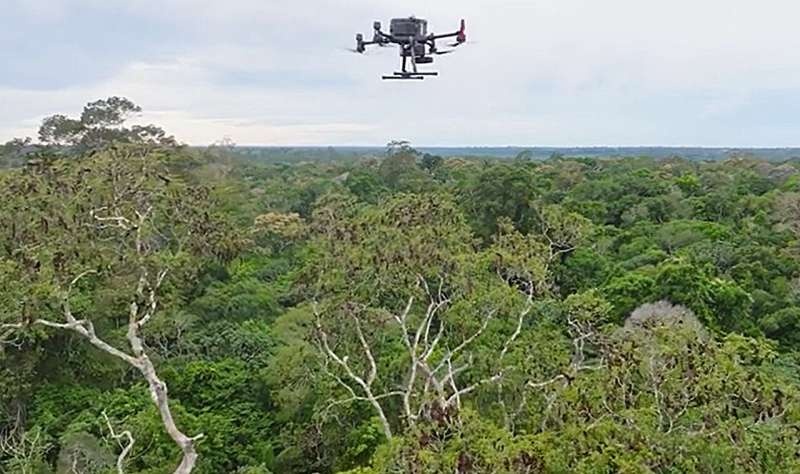Researchers have developed a specialized drone equipped with a fabric probe to collect environmental DNA from the treetops, revealing a hidden world of biodiversity in the rainforest canopy.

Revealing the Tree Top Lifeforms
Did you ever think about the types of creatures that are swinging around in the thick canopy of the rainforest? This hidden realm has been a source of wonder for years—those microscopic creatures are hard to see with the naked eye, after all.
However, a team of researchers has discovered a little sneaky way to expose the secrets in those tree tops. One approach the researchers have since devised is a specially designed drone carrying a fabric probe that can brush up against leaves and branches to collect environmental DNA (eDNA) from above. Through these analyses of genetic material, they have identified a stunning variety of invertebrates — many in the form of arachnids and insects but also some larger creatures like monkeys and even flies.
This new approach makes it possible to study species distributions in the remote and inaccessible regions of the rainforest that are often important fro restoration and conservation initiatives. No longer confined to sparse observations on the ground, researchers can now have a complete perspective on life inhabiting the canopy, all the way down to invertebrates just millimeters small, up to larger vertebrates. This knowledge is critical to understanding the careful equilibrium of these ecosystems and how they might be best preserved.
Drones to the Rescue
Working at the top of a rainforest canopy has always been difficult for researchers and conservationists. Conventional methods are also time-consuming, expensive and often dangerous (like climbing trees). That’s what the drone is for.
The researchers’ drone locates Antman on the treetops without compromising the fragile vegetation. The Wheeler Lab developed it to have a tethered fabric probe that extends and retraces while gently brushing the leaves and branches to capture eDNA samples.
There are several benefits to this method. One is it enables researchers to access places that are incredibly difficult or impossible for a human to reach, such as hard-to-reach, protected or delicate environments. Finally, it has low impact on the environment since the drone and its sampling system are designed so that they cause practically no collisions or disturbances.
What is likely a game-changing feature is the drone’s potential to operate beyond the sight line of its remote pilot. It presents new opportunities to study and monitor the broad expanse of rainforests, much of it out of reach on foot.
The researchers explain: “If we are to conserve nature, we need to know it better.” A new system of using drones to collect eDNA has illustrated this, revealing the secret world of the rainforest canopy and opening up potential applications for better conservation and restoration.
Conclusion
This new drone-enabled method for specially designed eDNA capture devices is a major breakthrough in rainforest biodiversity research. This allows researchers to get a much greater insight into the complex ecosystems that define the crucial forests. This insight will be vital to the conservation of these unique, irreplaceable phenomena.
